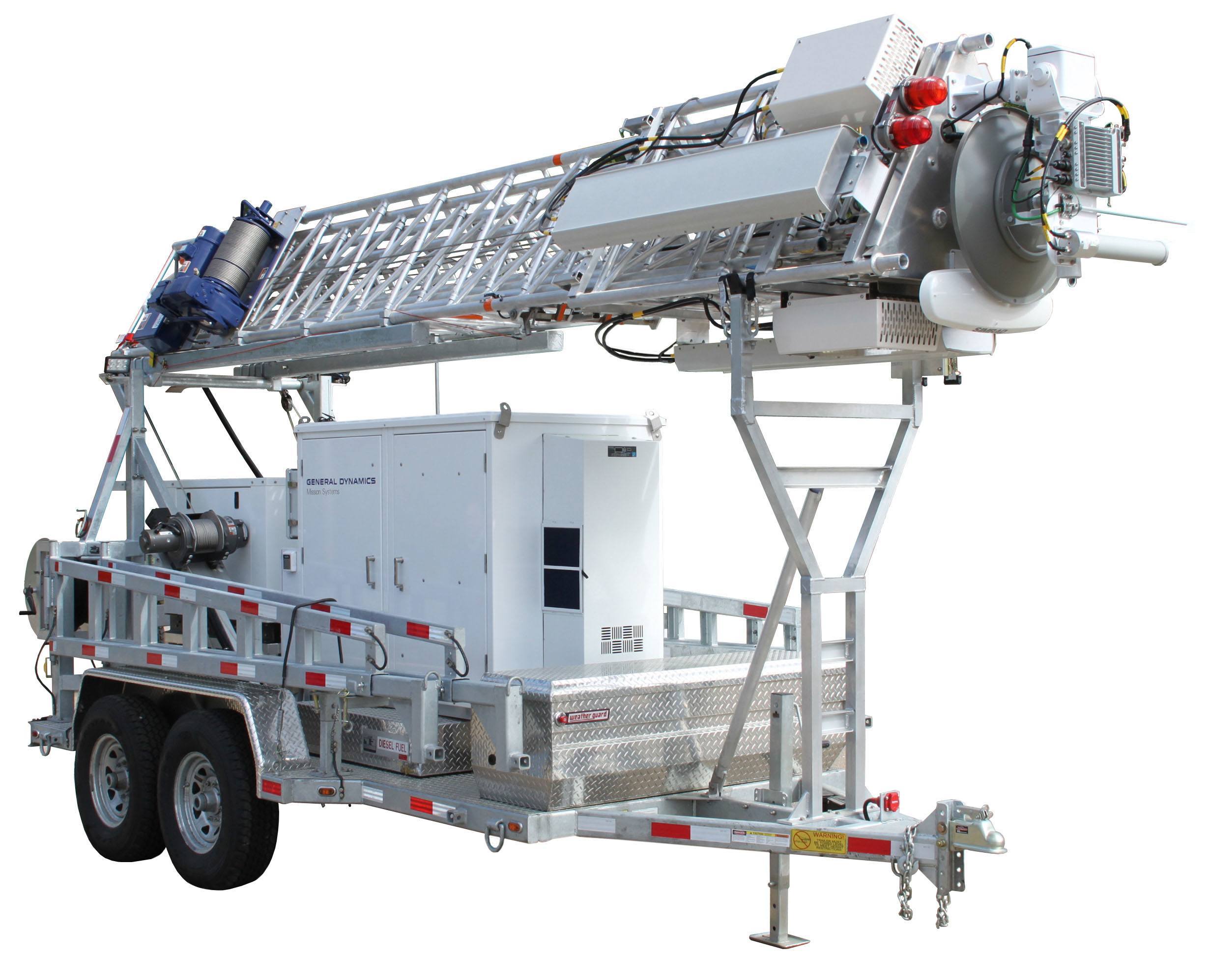Why Interoperable Communication is Important for First Responders

Interoperable Communications
When emergencies happen, first responders need to communicate with each other quickly and flawlessly. Coordinating movement, resources and evacuations means speaking across distances — and when messages break down, responders cannot do their jobs.
Interoperable communication (IC) systems are the solution. These systems let emergency teams and location staff speak across different equipment, such as apps, wireless systems, mobile towers and other tools, seamlessly connecting them in critical moments.
Challenges for Public Safety Communications
Public safety agencies (PSAs) are constantly working together. Still, many agencies use incompatible frequencies and equipment during emergencies. Spotty coverage and poor communication slow teams down, preventing them from helping those in need. Some challenges in public safety interoperable communications include:
- Different frequencies: The United States Federal Communications Commission (FCC) regulates non-federal frequency use. PSAs can use a set frequency range, or band, for their messaging. This set band use prevents non-PSAs from accessing frequencies, improving communication. However, PSAs might use different bands, preventing their devices from communicating with other agencies.
- Incompatible equipment: PSAs might carry incompatible equipment — and without the right equipment, teams cannot talk to each other. While PSAs can buy compatible radios for these situations, extra radios lead to more costs and require carrying equipment and battery monitoring.
What Situations Call for Interoperable Communications?
Interoperable communications are critical in emergencies. No matter the event, being able to work across agencies protects the public and resolves the situation faster. Here are some of the events that call for IC:
- Natural disasters: During natural disasters, all hands are on deck. Hurricanes, earthquakes and wildfires require first responders, health care teams and government agencies. IC systems help these groups coordinate rescue efforts and share resources when networks are down.
- Political rallies: Political rallies involve important government figures who are often at risk of threats or violence. IC systems keep different police and government agencies in contact when they’re watching over a political figure.
- Public events: Events like concerts and parades attract many people and cause heavy communication traffic. IC systems ensure first responders can coordinate with each other during the largest, loudest events.
- Threat incidents: Terrorism or domestic incidents need an immediate, seamless response. IC lets police, fire departments and federal security share real-time intelligence and execute a coordinated response plan.
- Public health emergencies: In cases like pandemics or mass casualty incidents, IC systems let health officials and responders manage resources and prioritize care. They can get the right information to the right people while improving public health.
Tools Needed to Establish Interoperability
IC systems are the answer to public safety communication challenges, allowing agencies to talk in real time. These tools and processes make up an effective IC system:
- Radio systems: IC systems need collaboration-friendly radios. Interoperable communications systems can use trunked radio mode to share a radio frequency pool, making talking easier. When someone needs to speak, the system puts them on an open channel. Large groups message on the frequency pool, preventing busy signals while making frequency use more efficient.
- Gateway devices: These devices link radio systems together, allowing agencies to communicate easily during emergencies, even if they have different equipment.
- Shared networks: Connect devices using shared networks and mobile towers. When the area lacks infrastructure, large-scale operations may need mobile tower support.
- Emergency centers: Mobile command and emergency operation centers can improve coordination. They can communicate with groups and agencies, analyze data and manage incidents.
- Standard operating procedures (SOPs): Agencies need consistency to communicate effectively, and SOPs can help by outlining guidelines and protocols for communication. Everyone should know the components of the IC system, what phrases to use and how to work together during emergencies.
- Regular training: Agencies should plan and train together to boost interoperability. Regular interoperable communications equipment testing and agency training ensure personnel can respond effectively. The better the training, the smoother collaboration during emergencies.
Using these tools and techniques can seem costly and time-consuming, but they’re essential. Agencies can pay for interoperability communications systems with assistance from grants and other federal resources.
6 Advantages of Interoperable Communications Systems
Interoperable emergency communications provide essential benefits for agencies like the U.S. Secret Service, including:
1. Data Sharing
IC systems let agencies share data quickly and accurately. They exchange real-time reports, videos and images across departments. With everyone working from the same information, teams can make better decisions faster. Updated information on line-of-sight openings or weather conditions ensures groups are always response-ready. Instead of working with different data, teams can streamline their strategies together.
2. Simple Activation
IC systems are user-friendly and adaptable, even in rapidly changing scenarios. Agencies can establish networks instantly, avoiding setup delays or confusion. This flexibility ensures emergencies get full attention without wasting essential time. For example, groups can tow tower systems to the site with agency vehicles and avoid dealing with local network outages.
3. Decreased Response Times
Connecting communications systems also reduces response times. First responders and law enforcement can coordinate during emergencies faster when they’re on the same setup. Different frequencies or incompatible systems can cause delays and missed information. IC systems let everyone work together without these delays. This coordination is essential during sensitive scenarios like security threats or natural disasters.
4. Connections with Other Agencies
IC systems break down technical barriers that may cause problems. With the right tools, you can connect apps, phones and radios during large-scale operations. You can set up IC systems on the fly or for daily operations to create successful joint initiatives.
5. Community Partner Support
Interoperability also works for nongovernment organizations, like utility companies and health care providers. IC systems let government agencies and local groups work together seamlessly during crises. This collaboration maximizes resource use, and groups can coordinate more effectively to protect the public.
6. Reduction in False Alarms
Interoperable systems also help reduce false alarms. When agencies can communicate directly, they can confirm potential emergencies quickly. Instead of waiting for answers or using unnecessary resources, agencies will have up to date information. They can use resources where they’re actually needed while preventing panic.
Aluma’s History of Deploying Dedicated LTE Networks for Public Safety
Aluma Tower is an innovator in communications solutions. Our Cell on Wheels and other technology simplify coordination for your needs. We’ve worked with state agencies on Long-Term Evolution (LTE) networks to ensure public safety, and our 4G LTE Public Safety Networks can support communication during high-volume events.
Aluma’s custom solutions help agencies maintain emergency communication during rapid-response periods. You can count on our products to streamline coordination in all situations.
Establish Secure Communications with Aluma’s Communication Towers
ICs provide better efficiency during critical moments. Smoother messaging across platforms boosts collaborations and performance during emergencies.
Get secure, reliable and durable response solutions with Aluma’s communication towers. In critical moments, dependable communication is essential for fast, coordinated efforts. Aluma Tower offers solutions designed for military, emergency, public safety and other industries. With ISO 9001-2008 certification, we ensure the highest standards in reliability and performance.
Our towers are made with rapid deployment capabilities. They’re easy to establish in a range of environments and locations. Our products are built with U.S.-made components and designed for long-use periods. Aluma Tower’s lightweight, portable towers provide industry-leading results and quality, no matter your operation.
Partner with Aluma Tower to equip your agency with custom communication solutions. Cut downtime, boost security and connect teams for better response times and enjoy secure, scalable solutions for government needs. Contact Aluma Tower today to discuss how our communication towers can support your organization.
Linked References:
https://www.fcc.gov/engineering-technology/policy-and-rules-division/general/radio-spectrum-allocation
https://www.alumatower.com/resources/blog/use-cases-for-a-mobile-tower/
https://www.cisa.gov/safecom/emergency-comms-grants-list
https://www.cisa.gov/safecom/funding
https://www.alumatower.com/industries-served/emergency-management/
https://www.youtube.com/watch?v=xWG7PNOCDw8
https://www.alumatower.com/products/towers/
https://www.alumatower.com/industries-served/
https://www.alumatower.com/company/what-we-do/
https://www.alumatower.com/contact-us/
